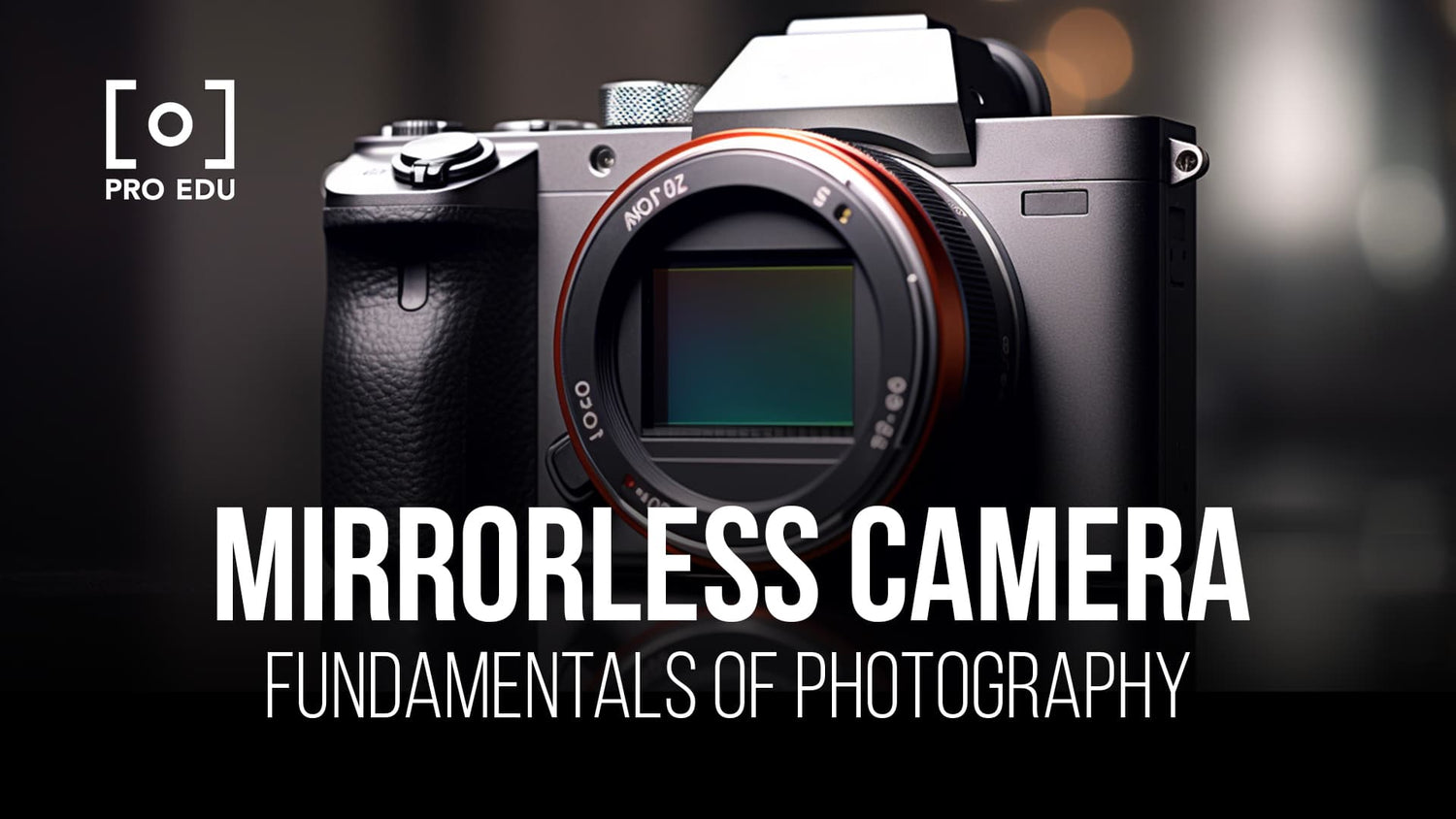Mirrorless Cameras: Revolutionizing the Photography World with Cutting-Edge Technology
The photography world has seen a dramatic shift with the evolution of mirrorless cameras. These high-performance systems have taken the market by storm and are gradually replacing traditional DSLRs, offering photographers a lightweight, versatile alternative without compromising on image quality or functionality.
Mirrorless cameras have undergone significant innovation, merging cutting-edge technology with a compact form factor that facilitates easier handling. These advancements have widened the scope of professional photography, enabling users to capture breathtaking images in scenarios that would have been challenging with typical DSLR cameras.
As the market for mirrorless cameras continues to grow, various popular models cater to different user needs and budgets. From hobbyists to professionals, everyone can find a suitable option that helps them leverage the transformative power these cameras bring to the photography realm.
Key Takeaways
- Mirrorless cameras are revolutionizing photography with their compact size and high-performance features.
- The innovation in technology has enabled mirrorless cameras to rival traditional DSLRs in image quality and functionality.
- With various popular models available in the market, photographers have a plethora of options to choose from that cater to their specific needs.
Evolution and Innovation in Mirrorless Cameras
The development of mirrorless cameras has significantly impacted the photography world. In this section, we will explore how companies like Sony, Canon, Fuji, and Nikon have contributed to the innovation and evolution of mirrorless cameras.
Sony, a pioneer in the mirrorless camera market, introduced the first full-frame mirrorless camera, the Sony A7 in 2013. This groundbreaking camera allowed users to capture high-resolution images without the bulk of a traditional DSLR. The introduction of Sony's E-mount further expanded the capabilities of their mirrorless lineup.
Canon entered the mirrorless market in 2018 with the Canon EOS R, a full-frame mirrorless camera that challenged DSLR dominance. Despite initial hesitation, Canon succeeded in creating a camera system that delivered top-notch image quality while eliminating the need for a mirror mechanism.
Fuji has carved out its niche in the mirrorless camera market with its unique X-trans sensor and a wide range of lenses. Their cameras, such as the X-T3 and X-T4, are renowned for their exceptional image quality, color reproduction, and portability.
Nikon also entered the mirrorless battle in 2018 with their Nikon Z6 and Z7 cameras, featuring new Z-mount lenses. These models are praised for their autofocus performance, and compete closely with their Canon and Sony counterparts.
Mirrorless cameras have also benefited from advancements in battery technology and energy efficiency. This has allowed for improved battery life over time, addressing one of the primary concerns of early mirrorless adopters.
Through continuous innovation, the leading camera manufacturers have revolutionized the world of photography. By embracing the mirrorless technology we have not only witnessed an evolution in image quality but also a drastic improvement in camera design and functionality.
Technical Aspects and Features
Mirrorless cameras have made a significant impact on the photography world, offering numerous benefits and features. One of the key factors that set them apart is the sensor size, with full-frame cameras providing larger sensors for better image quality and low-light performance.
Another essential feature in mirrorless cameras is their autofocus systems. Modern cameras have advanced autofocus capabilities that allow for faster and more accurate focusing, helping photographers capture sharp images even in challenging situations.
In addition to sensor size and autofocus, image stabilization is a notable function in these cameras. Many models include in-body image stabilization (IBIS), which compensates for handshake during shooting, resulting in sharper images and improved performance in low-light situations.
Another significant advantage of mirrorless cameras is the ability to capture high-quality videos. With the majority of new models offering 4K video recording, filmmaking enthusiasts can create stunning visuals without investing in a separate video camera.
In summary, mirrorless cameras bring numerous benefits to photographers, including larger sensor sizes for improved image quality, advanced autofocus systems for fast and accurate focusing, in-body image stabilization for steadier shots, and 4K video capabilities. This combination of features presents a strong case for the adoption of mirrorless camera technology.
Practical Considerations
When choosing a mirrorless camera, there are several factors to consider. In this section, we'll briefly discuss weight, travel convenience, exposure settings, suitability for beginners, budget considerations, reviews, lens mount compatibility, dynamic range, and the compact form factor of mirrorless cameras.
Mirrorless cameras are known for their compact size and lighter weight, which makes them ideal for travel. The reduced weight and size can be a huge advantage for photographers who spend a lot of time on the go or want to pack light.
Exposure settings on mirrorless cameras allow for more precise control, but can also be beginner-friendly with their automatic settings. Many mirrorless cameras offer easy-to-understand interfaces and menus, making them a great choice for beginners looking to improve their photography skills.
Budget is always an important consideration when purchasing a camera. Luckily, there are mirrorless cameras available at various price points, catering to different budgets. However, it’s important to read user reviews and compare features within your budget range to find the best option for your needs.
Lens mount compatibility is another factor to consider. Mirrorless cameras often have their own specific lens mounts, which might limit the available lenses for certain camera models. However, some manufacturers offer adaptors to use lenses from different systems. Make sure to research lens options and compatibility before making a decision.
Dynamic range is about a camera's ability to capture details in both the shadow and highlight areas of a picture. Mirrorless cameras typically perform well in this aspect, offering a competitive dynamic range compared to DSLRs.
Lastly, the compact nature of mirrorless cameras not only benefits their size and weight but also contributes to a quieter shooting experience. With no internal mirror to slap around, mirrorless cameras are significantly quieter, allowing you to take discreet photographs in various scenarios.
Popular Mirrorless Camera Models in Market
In recent years, the market has seen the introduction of many impressive mirrorless camera models suitable for different needs and budgets. We will discuss some popular models from leading camera manufacturers, covering their unique features and capabilities.
Sony A7 IV: The Sony A7 IV is a full-frame mirrorless camera that is known for its exceptional low-light performance and high-resolution sensor. It provides reliable autofocus and continuous shooting capabilities, making it an excellent choice for both photographers and videographers.
Canon EOS R5: The Canon EOS R5 is another full-frame mirrorless camera with a 45-megapixel sensor, offering image stabilization and a dual-slot memory card system. Its reliable performance, high-resolution output, and compatibility with Canon's RF lens system make it a compelling choice for professionals and enthusiasts alike.
Fujifilm X-T5: Fujifilm's X-T5 model is an evolution of its popular X-T series. While it isn't available yet, we can expect many improvements in autofocus, video capabilities, and overall performance as it follows the steps of its predecessor, the Fujifilm X-T4.
Olympus: Olympus has a long-standing reputation for producing rugged and reliable mirrorless cameras, such as the OM-D E-M1 Mark III, known for their excellent image quality and impressive 5-axis in-body image stabilization system.
Leica: Leica cameras are known for their exceptional build quality and premium price tag. Their mirrorless lineup features models like the Leica SL2-S, which boasts a full-frame CMOS sensor, 24-megapixel resolution, and L-mount lens compatibility.
Sony A1: The Sony A1 is a high-end mirrorless camera that raises the bar in resolution, speed, and video capabilities. With its 50-megapixel sensor, 30fps continuous shooting, and 8k video recording, it is designed to satisfy the demands of professional photographers and filmmakers.
Canon EOS R3: The Canon EOS R3 is another professional-grade offering from Canon, featuring a 24-megapixel sensor, eye control autofocus, and capable of shooting 30fps bursts. It is optimized for the fast-paced world of sports and wildlife photography.
Finally, the Sony A7 IV and Canon EOS R7 are rumored upcoming models that have generated a great deal of excitement among photographers. While information is still limited, we can anticipate significant enhancements in their features and capabilities, as manufacturers continue to innovate and push the boundaries of mirrorless camera technology.
Potential Future Developments
As the world of photography evolves, mirrorless cameras continue to gain traction and shape the industry. In this section, we will explore potential future developments in the technology and design of mirrorless cameras.
One area where we expect significant advancements is video capabilities. Currently, 4K video is widely adopted in mirrorless cameras, but it is highly likely that cameras will support 8K resolution in the near future. This upgrade will provide more detail and better image quality to filmmakers and photographers alike.
Sensor technology is another aspect that is constantly being improved. APS-C sensors are popular in mirrorless cameras due to their compact size and high-quality output. However, we anticipate that future camera models will incorporate increasingly larger sensors, providing better low-light performance and overall image quality.
Battery life has always been a concern for photographers, and it is no different with mirrorless cameras. As technology advances, we expect to see improved battery life, allowing photographers to capture more shots per charge. This will be especially beneficial for those who rely on their cameras for extended periods.
Several companies, such as Panasonic and Sony, are pioneering the mirrorless camera market. Competition among these brands will likely lead to further improvements in camera performance, speed, and functionality.
In summary, some potential future developments for mirrorless cameras include:
- Increased video resolution (8K)
- Improved sensor technology
- Enhanced battery life
- Continuous innovation by leading brands (Panasonic, Sony, etc.)
These advancements will undoubtedly contribute to the growing popularity of mirrorless cameras and revolutionize the world of photography.
Frequently Asked Questions
What advantages do mirrorless cameras offer over traditional DSLRs?
Mirrorless cameras tend to be more compact and lighter than DSLRs, making them easier to carry around for extended periods. They also offer faster autofocus and continuous shooting speeds due to the absence of a mirror. Live View, a feature that has become commonplace in digital point-and-shoot and cellphone cameras, is integral to mirrorless camera use.
How have mirrorless cameras impacted the professional photography industry?
Mirrorless cameras have made a significant impact in the professional photography industry as they offer similar image quality and performance as DSLRs while being more portable and versatile. Professionals are increasingly adopting mirrorless cameras as their primary or backup systems due to these advantages.
What are some current and emerging trends in mirrorless camera technology?
Current trends in mirrorless camera technology focus on improving image stabilization, expanding dynamic range, and enhancing video capabilities. Additionally, manufacturers are working to develop more advanced autofocus systems and incorporate AI-powered features to further improve overall camera performance and user experience.
How do AI-powered features enhance mirrorless camera capabilities?
AI-powered features in mirrorless cameras allow for more precise photo editing and intelligent adjustments to improve image quality, as seen in AI-powered editing tools. Furthermore, AI technologies in smart cameras help users capture better photos by analyzing scenes and adjusting settings automatically.
What role do mirrorless cameras play in the future of photography?
We expect mirrorless cameras to continue playing a crucial role in the future of photography. As more advanced features and improvements are introduced, mirrorless cameras will likely become the dominant choice for both amateur and professional photographers, driving innovation and shaping the industry's direction.
Are there any significant drawbacks to using mirrorless cameras?
Although mirrorless cameras have many advantages, there are some drawbacks. Battery life can be shorter compared to DSLRs due to the continuous use of electronic viewfinders or LCD screens. Additionally, the lens selection for some mirrorless systems may currently be more limited than those available for DSLRs. However, manufacturers are continuously expanding their mirrorless lens offerings to address this issue.




















